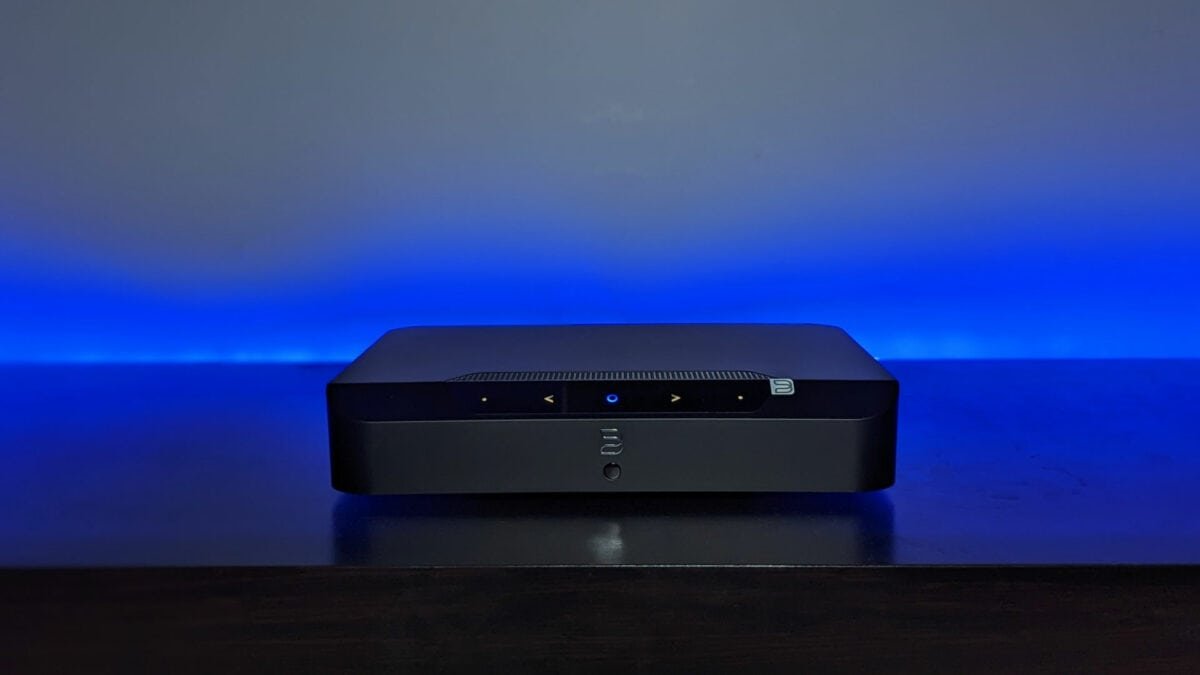Blusound is a brand synonymous with HiFi. Their latest entry, a HiFi Audio streaming amplifier, The Powernode Edge, aims to raise the bar on what we can expect from the wireless, streaming audio experience. Packed to the brim with features and settings, the Powernode Edge aims to be “the perfect entry point into ‘just add speakers’ Hifi for the streaming age”.
While many of us might be used to streaming MP3 quality audio through our smartphones or tablets, The Powernode Edge sets the bar higher, offering a fully lossless streaming experience for those looking for more out of their audio devices. This wireless amplifier is designed to be the backbone of any hi-res streaming audio experience and a great entry point for those just starting out.
“The Powernode Edge sets the bar higher, offering a fully lossless streaming experience for those looking for more out of their audio devices.”
The Powernode Edge is a sleek, compact unit with a footprint not much larger than a Mac Mini. Its matte black finish (also available in white) is accented only by a small, minimalist digital interface. This interface handles basic navigation and audio control if needed. The rear side features hardwired connections for many ports, including Ethernet, USB, IR jack, optical/analog input, HDMI eARC, and USB Type-A.

As for wireless connections, the Powernode Edge has you covered. Packed with Wi-Fi 5(802.11ac) dual-band as well as Bluetooth 5.0 aptX HD (more on this later), you’ll have no problem connecting your mobile devices and streaming to your heart’s content. In regards to Bluetooth, it supports a two-way connection, meaning you could both stream audio to it and push audio out to a set of Bluetooth headphones.
Additionally, a Subwoofer output (RCAx1) and 5-way binding post( multiple ways to connect) speaker terminals will help take care of powering speakers. Speaking of speakers, the Edge can power up to two 40W speakers and the sub. What is most impressive is the sheer number of connection options available. It allows for exceptional integration and output options to supplement your audio needs.
With the inclusion of HDMI eARC, for example, the Edge can be used as either a stereo home audio system or as support for rear channel speakers in an existing audio system. It’s worth noting that, according to the Bluesound site, the Edge can also be used in conjunction with an existing hi-res streaming setup you may already have started, integrating into your existing ecosystem.
In regards to integration, the Edge comes with BluOS, controlled via Bluesound’s own application, available at your app store of choice. The Edge also supports an array of music services like Amazon, iHeart Radio and Spotify, as well as SMB file transfer. Also, for those that like to talk to their devices, you’ll find support for Alexa and Google Assistant. Its impressive support and integration plays well into Bluesound’s desire to make the Edge the entry point for people looking to up the sound streaming experience.

While all of these connect and integration options are impressive, the audio support raises the bar with the Edge. You’ll find a host of audio file format compatibility here with everything from MP3 to FLAC (HiFi quality) seamlessly able to stream to the Powernode Edge.
“Bluesound isn’t holding back on its promise to create an amazing entry point to the HiFi audio streaming experience.”
Furthermore, the Powernode Edge supports sampling rates up to 192kHz with 16-24 bit depth. For those new to the audio world, bit depth is a measurement of how many possible values can be assigned to each bit. In layman’s terms, the higher the bit count, the more possible values can be assigned to each, which translates to a higher resolution of audio sampling. A higher bit rate equals more accurately representing the original recorded sound.
The Powernode Edge is a powerful amplifier that can handle, process and output some serious sound. This is all processed internally with an ARM Cortex-A53, Quad-Core, 1.8GHz per core processor. This processor has no problem handling anything thrown its way and is the core reason the Edge can handle the aforementioned aptX HD Bluetooth signals streaming.
Suffice it to say, Bluesound isn’t holding back on its promise to create an amazing entry point to the HiFi audio streaming experience. While it all looks impressive on paper, the proof is in the pudding, as they say, and the real test comes from hearing the Edge in action. For testing, the good folks at Bluesound were gracious enough to lend us a set of Dali Oberon 3 Speakers. For a full list of specs on these, check out their site here.
Setting up the Edge is as simple as plugging it in, downloading the app and running the in-app wizard. Within about a minute, you can be up and running and pair your device with the Edge. However, to maximize the experience, it’s worth taking a little extra time to link up any streaming services you have through the BluOS app. This will allow for additional EQing, a secondary level of audio control, and some seamless integration options.
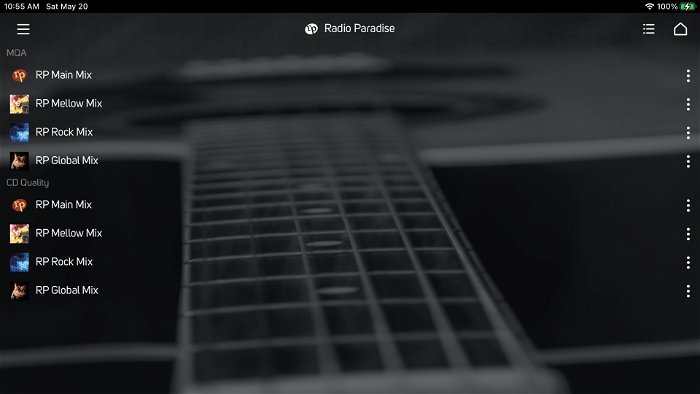

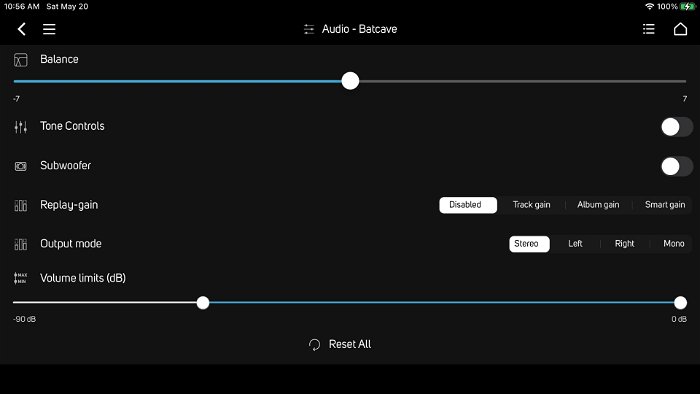
The BluOS app is easy to navigate and operate, once again playing into Bluesound’s design philosophy of “perfect entry point” for those new to HiFi audio streaming. While I wouldn’t normally speak to the visual appeal of an app, I will note that the app interface is actually quite beautiful, with accent backgrounds and a dark aesthetic. It makes for a great visual experience.
Regarding the audio experience you can expect from the Powernode Edge, It is amazing. In all fairness to the testing experience, the Oberon 3’s are excellent speakers, so the audio is already going to sound amazing without even trying. However, for testing, I spent the majority of the time testing to see how well the Edge could handle the processing and output of lossless files to the Oberon 3s. I ran several lossless audio samples through the Edge outputting to the speakers and measured for clarity, quality and input lag.
The results were as I expected. Streaming from my Pixel 6, I had no issues at all. The audio quality really is impressive, especially when considering that it is being processed, in real-time, over a Bluetooth connection. I tested audio files from Amazon Music’s Ultra HD collection and then ran the tests again, streaming from the DOOM Eternal Lossless soundtrack (one of the perks of the Collectors Edition) I have stored on my Pixel 6.
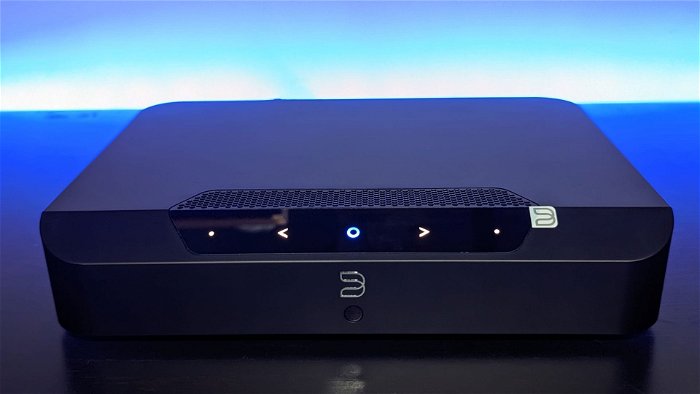
In both cases, the audio produced was incredible. Highs, mids and lows all came across as clean, clear and distinct. Nothing was overly bright or warm but rather was exceptionally well-balanced. In part, this is due to the Oberon 3’s but the Edge gave them everything needed to create a beautiful sound.
As mentioned, I spent some time testing for latency. This was handled by streaming HD video from my phone and iPad to the Edge and pushing the audio out through the Oberons Via Bluetooth. Without exception, the Edge handled the streaming audio like a champ. There was no latency or lip sync issues and vocal audio sounded clear and distinct among all the other audio coming through.
Additionally, I tested audio for games and movies. The Edge easily handled streaming from my 4K projector with no latency. The audio balance was quite impressive, with clear dialogue over music and sound effects. Gaming likewise was an impressive experience, even with the audio streaming from my projector to the Edge.
While the Edge is absolutely amazing, there are a couple of caveats to consider with HiFi streaming in general. For starters, as amazing as the Powernode Edge is, it will still be limited by the speakers you connect to it and the device you stream from. Spend the time and research to ensure you are getting speakers that will leverage all the Edge has to offer.
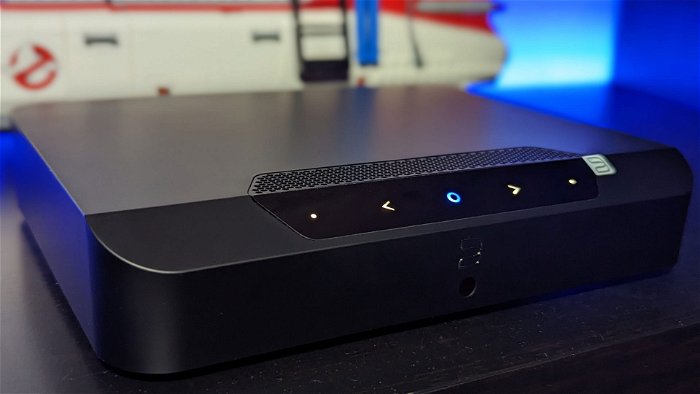
Additionally, in order to achieve lossless level audio quality, the Edge relies on Bluetooth 5.0 aptX HD. However, not all mobile devices support Bluetooth 5.0 aptX HD. In my case, I tested with the Pixel 6 (Bluetooth 5.0 aptX HD support) and my 9th Gen iPad (Bluetooth 5.0 aptX HD not supported).
In the case of the Pixel 6, the audio had no problem getting through and producing this lossless quality. In the case of the iPad, the Edge received a compressed file format. In practical terms, the audio quality in both cases is still absolutely astonishing. It’s worth noting that if you want to get the most out of lossless streaming services such as Apple Music or Amazon Music Unlimited, you need to ensure you have a device that can handle it.
One final note on steaming lossless files, we are getting into the nitty gritty at this point. There is still some minor compression that happens in transferring the file via Bluetooth. Honestly, it is so minor that I’m not even sure you would notice unless your pouring tens of thousands of dollars into your hardwired system to prove me wrong. In which case, I concede, you win.
With that noted, Bluetooth 5.0 aptX HD is the absolute best in wireless audio transfer and can push audio samples at 24-bit with a compression ratio of 4:1 which means for every 4dB of signal that rises above a threshold, a compressor will increase the output by 1dB. For a Bluetooth signal, that’s pretty amazing, and the results will be an incredibly accurate, clean audio experience.

The Powernode Edge from Bluesound is one of the most impressive HiFi wireless streaming amps I’ve ever worked with. It consistently produces incredible Hi-resolution audio samples that sound amazing. The fact that it can handle so many wired and wireless inputs and push out a power level of sound makes it all the more impressive. For those looking to up their audio experience at home, The Powernode Edge is a perfect place to start building from.
